The Red Hook Regatta
Over the past seven years, the Red Hook Regatta has become something of a Red Hook institution, taking place every July along the East River waterfront of this small, isolated neighborhood in South Brooklyn. The regatta is, as its core, a remote-controlled miniature boat race featuring ships that are 3D printed and/or homemade—though “race” here is something of a misnomer, as half the time the boats capsize or fall apart, and that’s okay, even expected. Most of the contestants have never made a seagoing vessel before, so whether their creations sink or swim is part of the fun, and also not really the point. Above all else, the regatta emphasizes out-of-the-box ideas, process over product, and learning on the go. It’s this DIY, hardscrabble nature that makes the regatta so endearingly popular.
On race day, families watch from the shore and nearby Valentino Pier; food trucks idle nearby; and face paint and tie-dye stations are set up water-side. Unwaveringly local in scale, the regatta is a Red Hook event for Red Hookers; it encapsulates the tight-knit, small-town feel of the neighborhood—an anomaly in a city of strangers—its young families, seasoned bartenders, big time artists and small time ones too, jobless trust funders, professional alcoholics, One-Eyed Ryan and the Other Gay David, all dressed up as schooners or wizards or who knows what, giving boatmaking a go with predictably unpredictable results. It’s the motleyest of company in the motleyest of neighborhoods.
Looking forward to the regatta’s sixth edition, I sat down with its original organizer, creative technologist Dave Sheinkopf, to discuss the origins of the event, its focus on introducing robotics to kids from the neighborhood, and how technology should be accessible to all, not a select few.
***
Where did this idea for a Red Hook regatta come from?
Pioneer Works wanted to do a partnership with [local community center] Red Hook Initiative (RHI), but we couldn't figure out what it would be, or what we could actually offer. And I think it was the time where we had a [new] 3D printer at Pioneer Works. It was the first time anyone had seen them then. I was printing…just the most basic stuff, because I was learning how to use it. Around the same time, I discovered that the American Visionary Art Museum—an outsider art museum in Baltimore—was doing this thing called the Kinetic Sculpture Race, and they've done it for like 20 years. People build these huge contraptions that are pedal-powered, and they race through the streets and into the water, so these things have to float.
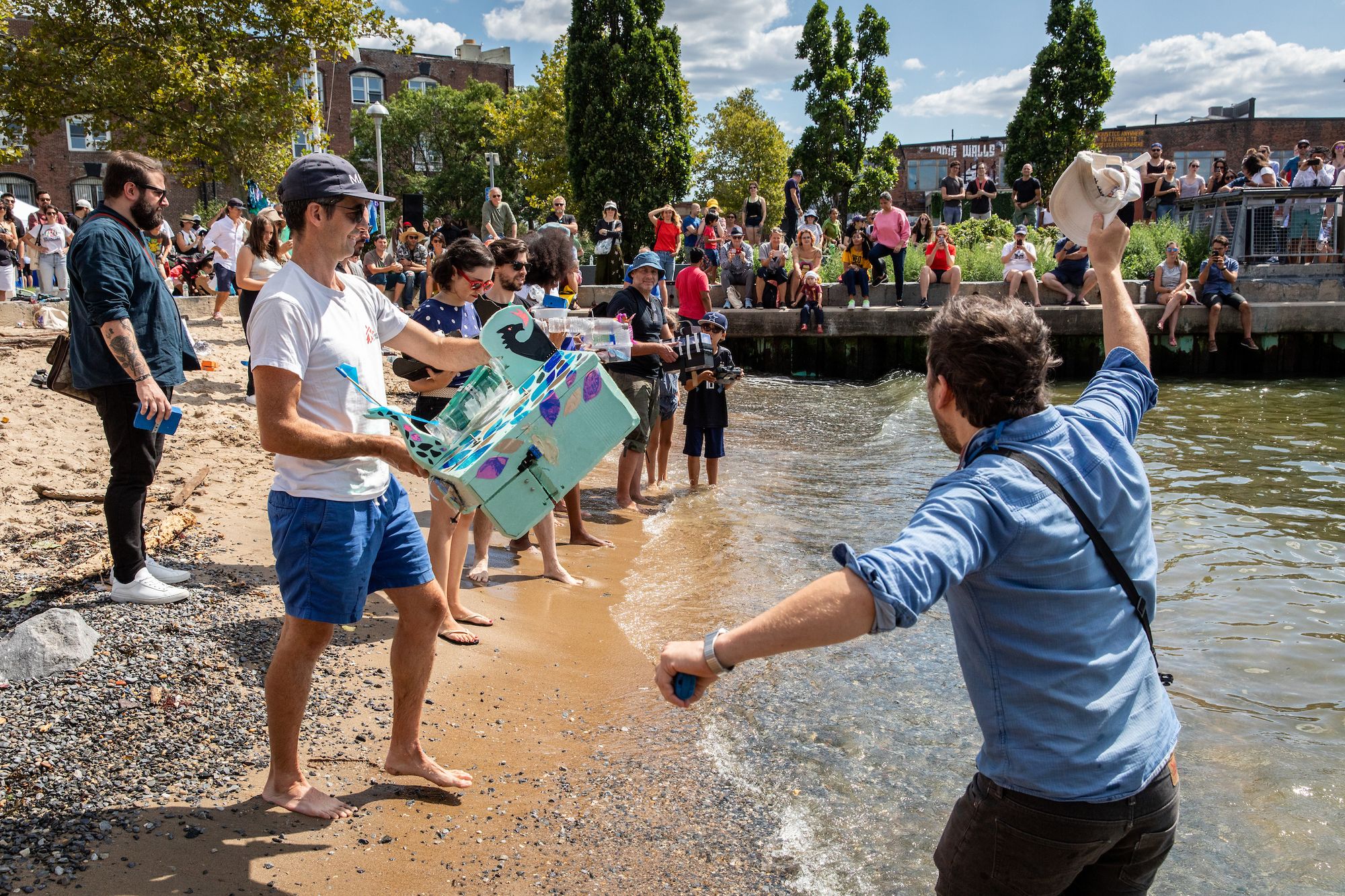
That sounds impossible.
Yes, it's totally impossible. And the contraptions are…one is a gigantic poodle, and they're made by all these crazy art groups. So it's a little like the Houston Art Car Parade, a little like Mardi Gras. But it has this race element to it. And then the other thing that was influential was Red Bull—when I was working with the Red Hook Crit bike race, it was sponsored by them. They ended up giving us free Red Bulls whenever we had an event or whatever, to give away.
They did this event called a Flugtag, where people build airplanes out of whatever materials they've got, and they have this pier that's like 20, 30 feet out over the water, and they push the planes off the pier and just see how far they can fly before they crash, with people in them.
Seriously?
Yeah. It's an event about crashing and burning. But so was the Vision Art Museum race. I think just seeing how excited people were about it, and how meaningful that race was in Baltimore, a town that's got a lot of economic hardship—I grew up near there too, my family is from there—I was like, "What if we did something like that?" And I realized 3D printing was really hot, and that the event would be the first of its kind if we did a 3D-printed boat race. And just by virtue of the fact that it's this new, novel thing, they'd be interested in that. Also, people really like water.
And Red Hook, being on the waterfront…
Yeah, yeah. We've got the water right there, so people are going to gravitate towards that. They always do. And then also if we tied it in with RHI’s Digital Stewards program, where teens are taught about tech and media, there would be a community-building aspect to it, so you have these three things: 3D printing, the waterfront, and community-building. I was like, "That's going to be a hit." It had enough of a hook, enough of a feel-good aspect to it. And also it was an education program that might mean something to a small group of students.
It's funny, because the Red Hook Regatta seemed so ad hoc and almost anarchic. When you were preparing for the first one in 2015, BRIC TV interviewed you and you were like, "We might just fail. This could be a disaster.” Usually I think of technology as being very slick. Everyone's perception of it, at least nowadays, is that it’s like an Apple product. It's done, for the most part. You get it. It's seamless. It's easy. But your idea of technology is the opposite.
I always pushed for it to be the most approachable thing ever. Because I think that the fear of technology is a misread of technology.
What do you mean by that? What is it?
What is what?
Technology. That’s maybe a stupid question.
It's human ingenuity, basically.
It's a tool, right?
I guess.
I only ask because I’m thinking of an artist we showed at Pioneer Works, Atelier van Lieshout, who would build these archaic, speculative structures with absurd systems—levers, furnaces—meant for people to live in and shit in, and it would recycle their waste as compost, and would ultimately help grow their own food supply. Just weird systems of assistance, or infrastructure-building, or sustenance. Which is kind of a technology, but the most primitive kind. You know what I mean?
Yeah, for sure. A lever is technology. A camera is technology. The foam in your shoes is technology. And I think just making it seem less foreign, less inhuman, I guess, was the idea for the regatta. When I was in college I had a job working on cars at a garage while I was doing very qualitative stuff in school, like writing and playing music—things that I just didn't feel were ever done, or were never clearly “right” or “wrong.” At the garage I met a couple of really great mechanics, and one of them said the most incredible thing to me, on one of my first days of work: "If you ever get intimidated, if you're looking at something and you're like, 'Man, I could never do this,' just remember the person that made this is just a person, just like you. A person made it, so a person can fix it." The same thing is true with technology. It’s not superhuman—it’s made by normal people, not God. I saw with some of my former high school students—that these are kids that never thought they were ever going to code, and there they were, typing code. And it was working. And it's just incredibly empowering to see that, because there's no mistaking that a lot of technology is intentionally disempowering, putting the power in the hands of the technology’s owners. They make everything opaque so a user can’t do anything. It’s intentional, to make everything not repairable, just replaceable.
So I think I try to really make technology understandable and accessible—that was the whole ethos of the regatta. The students were like, "Wait, we're going to put on a boat race?" And I remember on the first day we went down to the water with Laurenzo Reed, one of the first of two students in the program. I said, "Okay. Do you guys know anything about boats?" And they were like, "Nope." And neither did I.
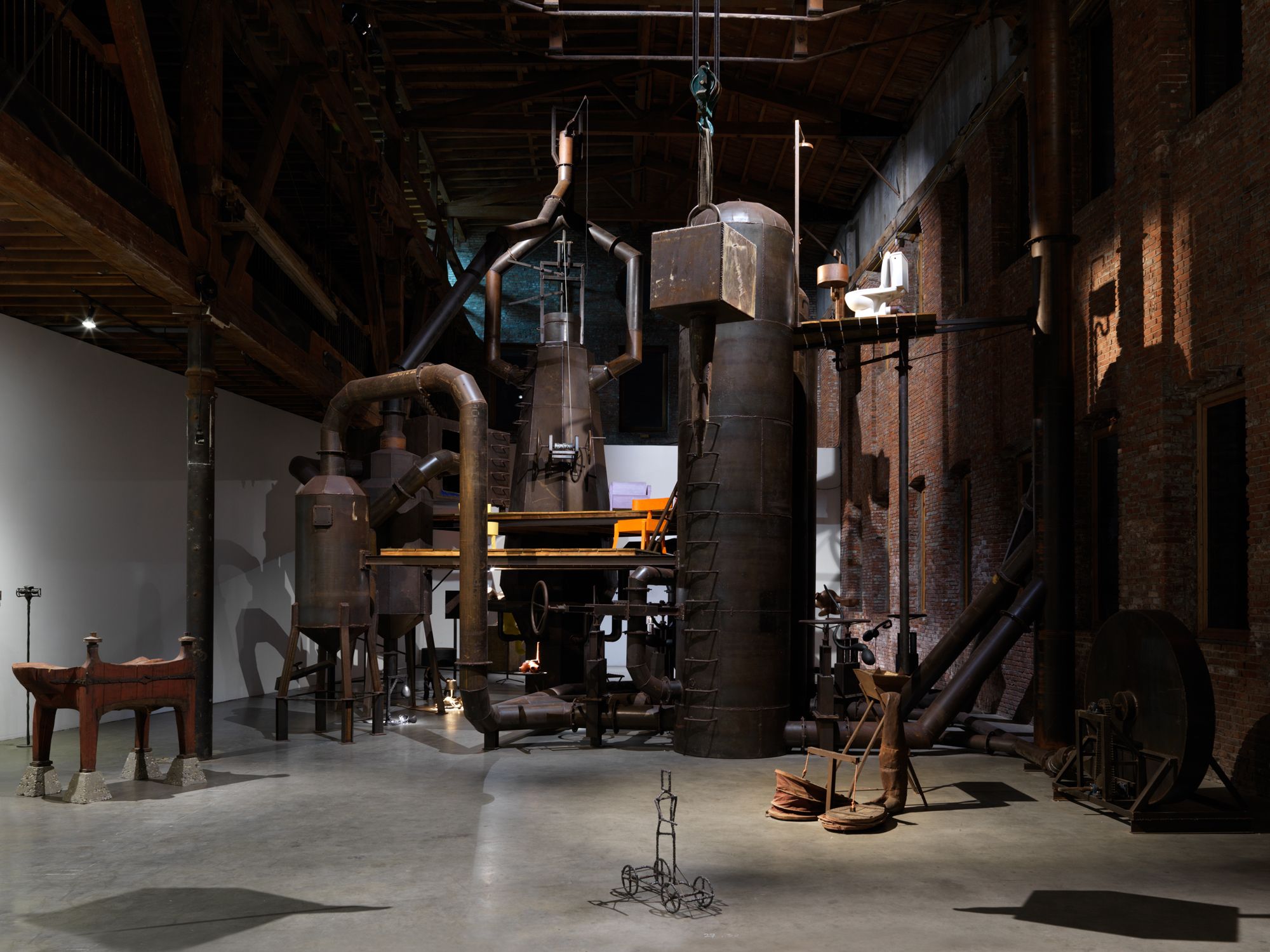
So you're all fucked, basically.
We just stood there, looking at the Mary Whalen [an historic oil tanker], and there were a couple of other boats there, and at Valentino Pier a ferry or tanker went by. We were really starting from zero. "What types of boats exist?" We looked at a lot of pictures on Google. "Oh, here's a tanker, a steamer, and stuff like that." After that we started learning Rhino, a CAD program which used to be free. We were like, "Nice. We can just get this on everybody's computer." And I was transparent from the beginning that I was starting in the same place as them. It was a journey that we went on together, which is the best way to learn.
Then we had to plan all aspects of the regatta. We wanted to make sure that there was free food. The people who wanted to race got a [homemade boat] kit for free, which included the motor and batteries and radio control, all the electronic parts. Everything had to be at the lowest barrier of entry possible, for anyone who wanted to do it. A couple days before the event we were feeling the pressure of getting all these boats done. I was trying to temper expectations, saying, "Look, if we get 30 people there, it's going to be fucking awesome. We're going to have 30 people watching the boats that we made."
But then I got an email from The New York Times, whom I did an interview with, and then BRIC did a video about us. We got on TV. We got all this stuff, and then people came from all over to the event. And Laurenzo, and the others, were like, "Why are all these people here?" Well, they were there for us. So then it became, okay, how do we continue to do this? And really, the first three years just followed the same formula, but we added a non-3D-printed category, just because we realized that 3D printing was a huge barrier to entry, and so you could build a boat out of anything.
It's so Waterworld or something.
Yeah, yeah. Artist Sam Lavigne made a floating trash pile boat. People started making weird shit, some sculptural.
Didn’t you make a boat that telephoned a congressman?
Oh yeah, Hope Floats. We named it after a Sarah Jessica Parker movie.
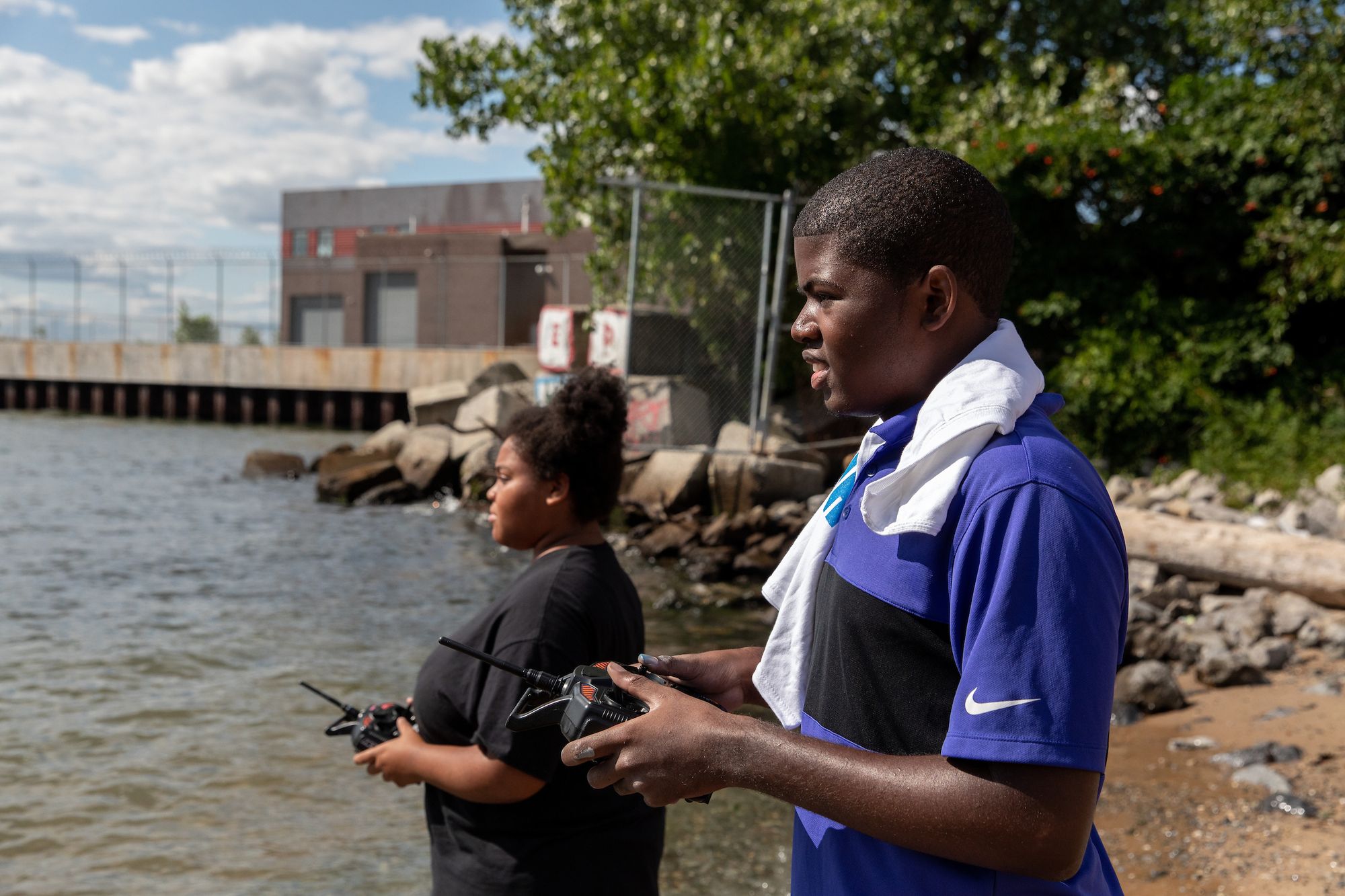
Two contestants drive their boats remotely in the 2018 Red Hook Regatta.
Photo: Walter Wlodarcyzk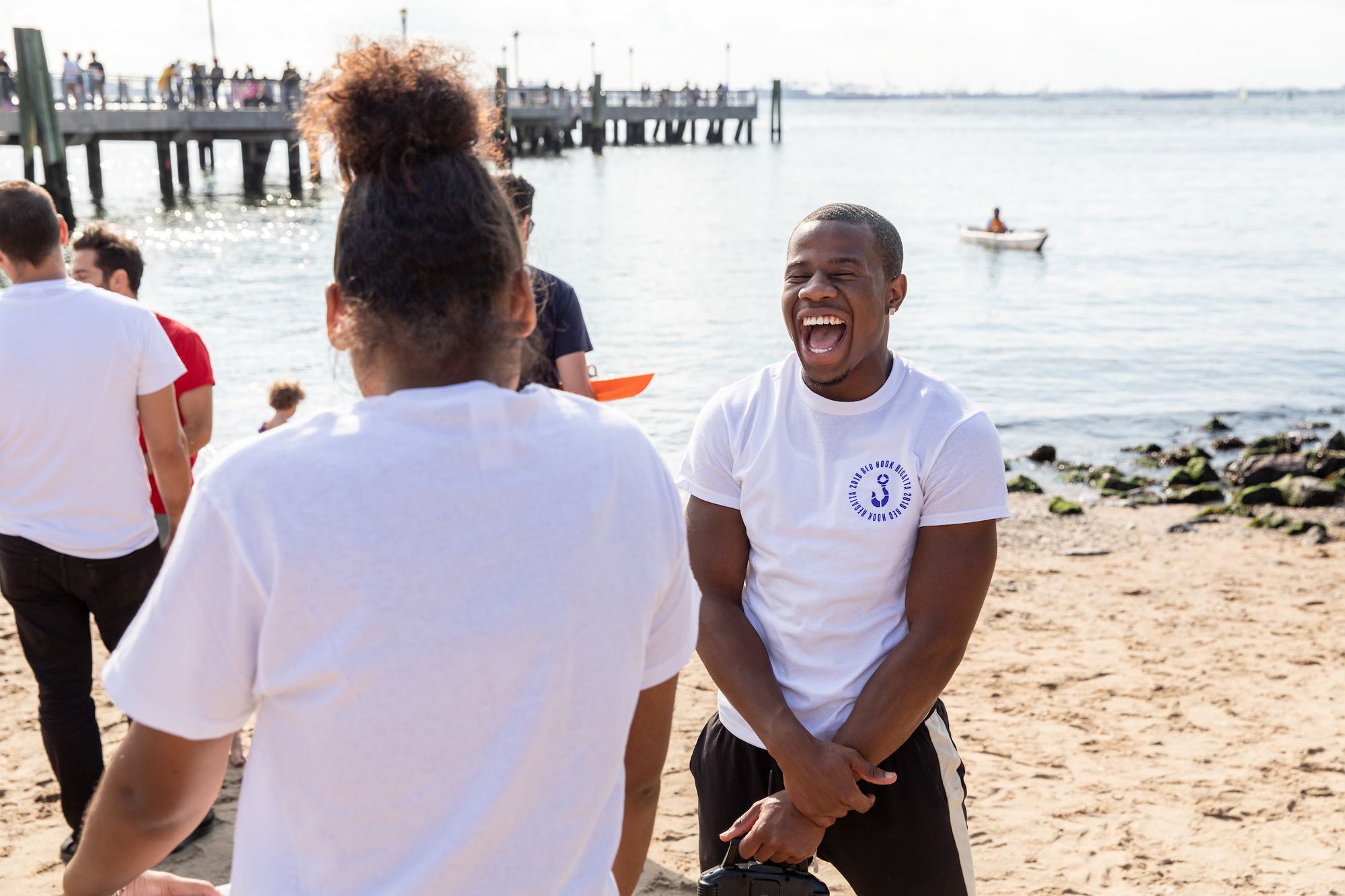
A beach scene from the 2018 Red Hook Regatta.
Photo: Walter Wlodarcyzk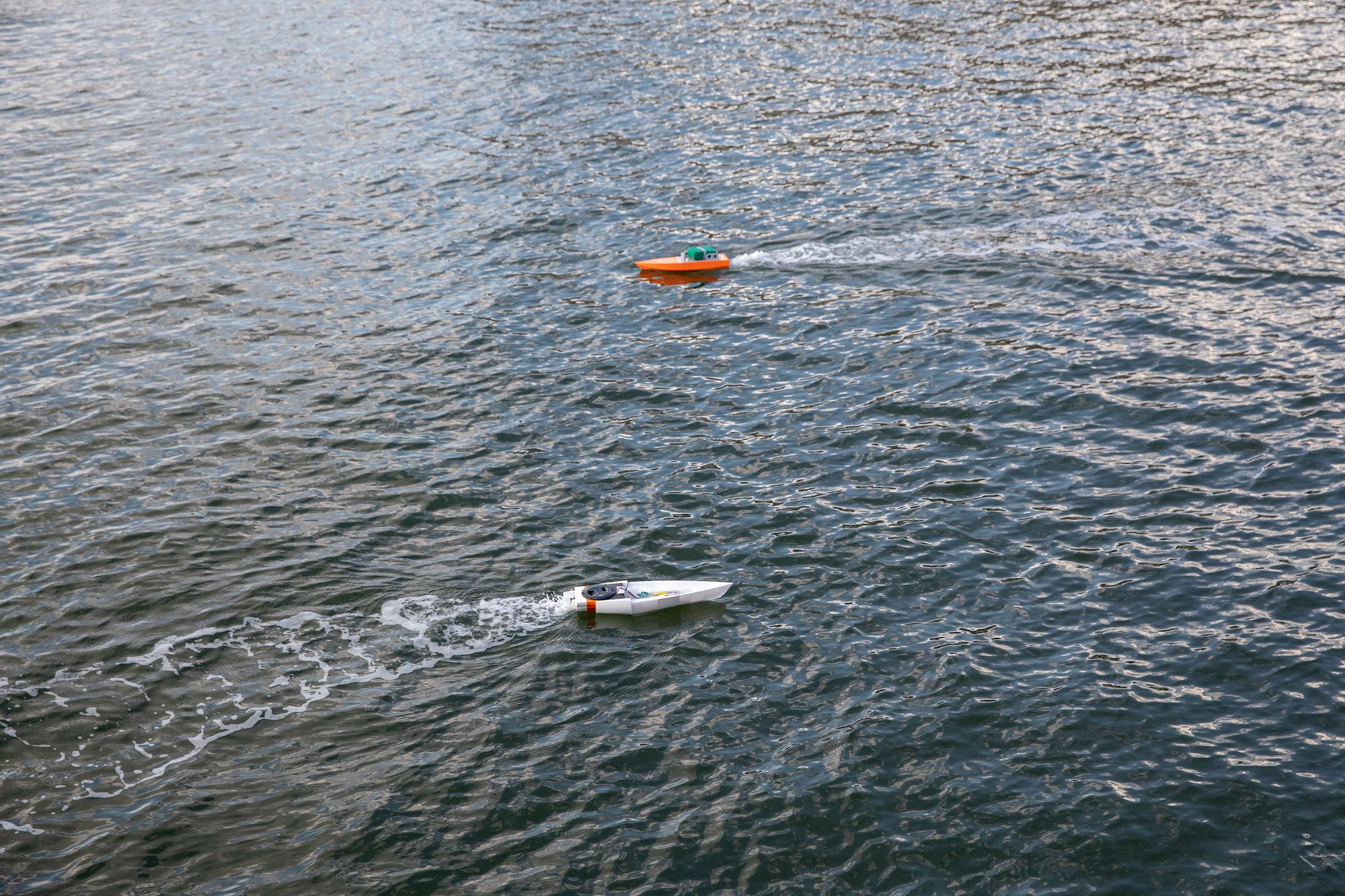
Two boats pass each other during the 2018 Red Hook Regatta.
Photo: Walter Wlodarcyzk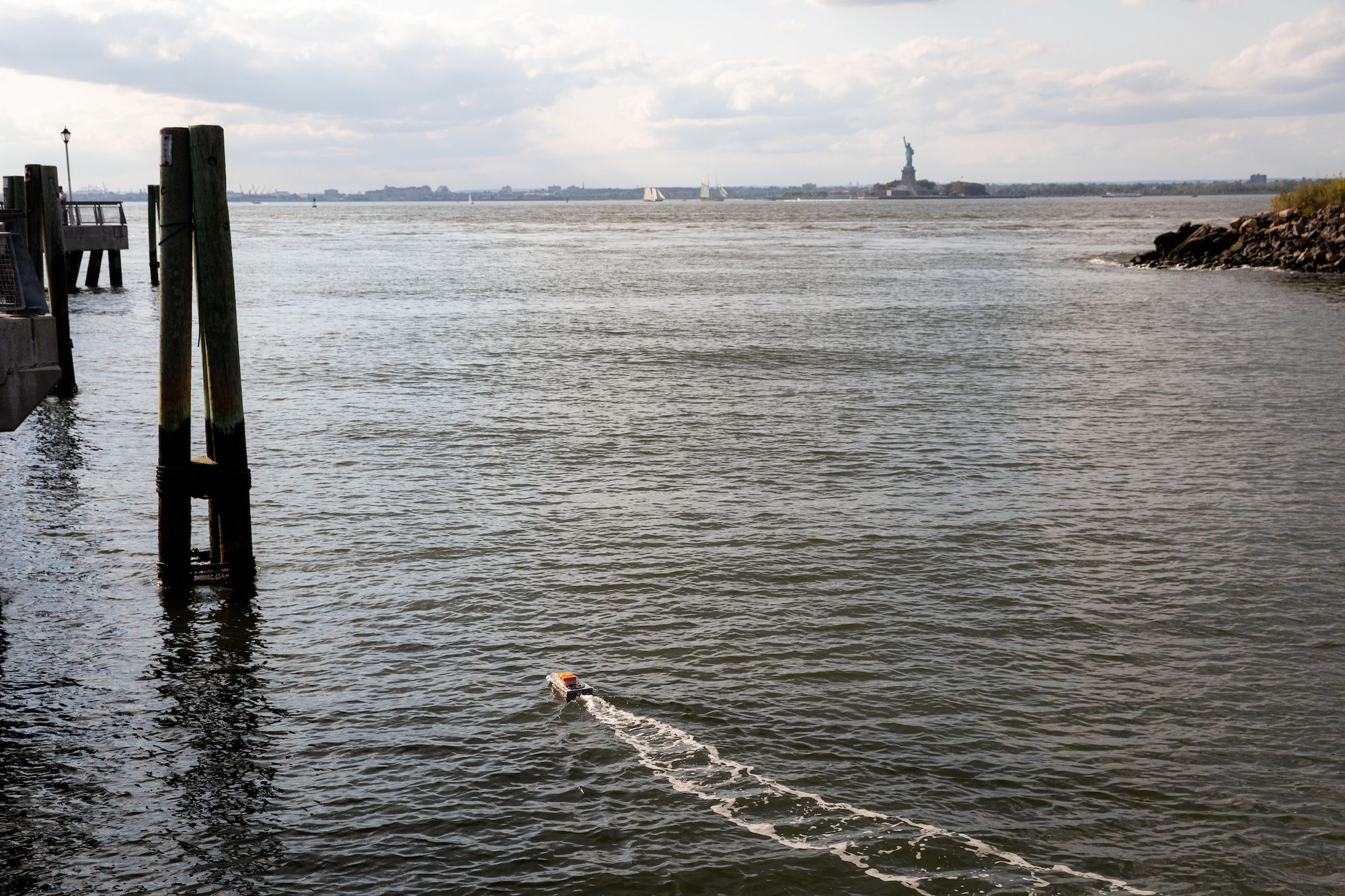
A boat heads into the distance during the 2018 Red Hook Regatta.
Photo: Walter WlodarcyzkYou mean Sandra Bullock?
Yes! America’s Sweetheart. We built a phone booth at Pioneer Works, where there was a touch screen, and you could type in your address and it found your congressional district. Then you could leave a message for your representative, which was beamed to this boat, a fiberglass heart that floated in the water and drove around with a solar panel on top. It just drove around in circles in the harbor, calling your representative and leaving your message over and over again, 24 hours a day.
That’s great.
Yeah. It was insane. We couldn't figure out how to get legs on that project. We were thinking, "This should be getting national press.”
It had real efficacy.
Yeah. We were thinking, all right, let's re-harvest this technology for good, for some sort of political…maybe “good” is a loaded term…but some sort of political agency. Technology with a capital T is generally evil, so with Hope Floats—and the regatta too—we were trying to make technology really human, and to level the playing field a little bit so you're not just a consumer, but you’re making it your own. ♦
This interview has been edited for length and clarity.
Subscribe to Broadcast